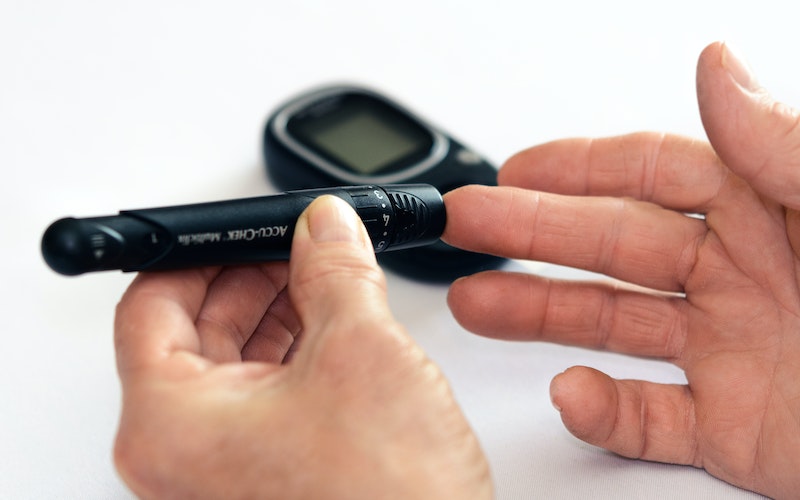Hackers can infiltrate clinical equipment as a great deal as they can a typical computer system. The environment aims for interconnection, the place each individual household health-related product can transmit and receive information instantaneously with the support of the Online of Points (IoT). The Net of Professional medical Matters (IoMT) is a increasing field revolutionizing the efficacy of health and fitness treatment and management, supplying peace of intellect to clients in restoration and prompt information to well being care companies.
House health care units need to have ample safety to have marketable and practical performance. Safety measures protect patients as a great deal as they solidify the integrity of major info in overall health care. Wellness treatment gurus require household medical devices to be accurate as they strive to accumulate as much information as probable to speed up analysis times and make health-related remedies via equipment-finding out data sets. As grand as these visions sound when transforming wellness care for the superior, are they feasible with the present-day protection of house health-related units?

How Dwelling Professional medical Products Are unsuccessful
Even though plenty of renditions of the household laptop and phone exist, professional medical products comprise even more sections and programs that make a thorough protection alternative for all health care gadgets impossible. When teams attempt to make sweeping implementations without comprehending the nuance of every instrument — a defibrillator in an grownup is vastly different in design than blood glucose meters for pediatrics — blindspots are inevitable.
These assumptions are specially harmful in a much more wellbeing-acutely aware entire world, as COVID-19 has improved health and fitness paranoia and physician visits. Residence health-related system product sales will only improve, primarily as they are additional recommended to getting old populations and asked for by the youth who want to keep an eye on their wellbeing.
Even with how these dwelling clinical gadgets differ across health care niches, they are normally mass-created and include the same blueprints. For cybersecurity pros, this regularity is a purple flag, specifically when they really do not have safety infrastructure designed-in. If hackers tamper with a single gadget and uncover its backdoors, breaking into some others is not hard.
Heterogeneity in units compounds along with the device’s daily life span. Home professional medical system companies make these devices durable because service disruption could be daily life-threatening. Without the need of accessibility to updates, these products turn into extra vulnerable as the device continues to be unchanged and hackers become much more impressive.
Adversely, house healthcare gadgets are inclined to stability issues since they are starting to be more related to AI. The greater the information stack, the extra area location hackers have to penetrate products. While unit connectivity forges a more knowledgeable professional medical field, it requires additional energy from tech groups to protect extra than just the unit alone.
How IoMT Generates Fears
Some health care products that hold human beings alive — notably implants — existing a additional severe cybersecurity problem than a laptop computer or software. Sufferers and health-related pros dilemma how volatile professional medical equipment now are and how considerably additional they could develop into when reliant on an interconnected hub like the Net of Issues. IoMT need to preserve connectivity and security. If not, lives could be at risk.
On top of that, wearable clinical units are extra well known now than ever, in particular as good watches employ far more health and fitness metrics into their functionalities. Is humanity’s IoMT technology capable in the present to manage this accountability?
Notable medjacking assaults on household health-related gadgets in recent many years have sparked much more productive discourse around progress. Consumer distrust in connected medical equipment is a principal motivator for these discussions, specially as Fuelband and Fitbit are only a few that have been issue to breaches. One particular of the most popular is eavesdropping, exactly where attackers attain entry to house healthcare gadgets by uncovering qualifications.
Entry potential customers to innumerable other extortion strategies. Health-related details is priceless to hackers, and executing a ransomware attack is just one way to financial institution on that. Malicious, targeted attacks could set particular person life at stake if threat actors manipulate details to improve allergy info or go over up about information details that signal individuals require help.
Attackers may well not even want to offer information and facts back again to vendors in the sort of ransomware. They could retain that intellectual home for themselves, which can disrupt the progress of dwelling medical products all over the world.
In which Household Health care Devices Can Strengthen
IT departments and cybersecurity teams can shoulder obligation for overseeing the cybersecurity of MedTech. Having said that, clinical devices range appreciably from telephones or desktops, and experienced biomedical engineers are vital to protection good results. Ignoring their experience places the devices at threat from the start out. Open communications among these groups will have immense gravity over the device’s defenses, specifically if other groups are concerned in the offer chain for distinct pieces.
The healthcare sector is acknowledged for its unwillingness to devote dollars on cybersecurity, and hackers know it. If enterprises alter the general public perception of security on residence healthcare units, it might maximize resistance to hackers. Right here are some cybersecurity techniques groups can experiment with above the numerous dwelling clinical units:
- Endpoint protection: Securing each individual related machine with antiviral application and encryption and upgrading to equipment that assistance these functionalities.
- Zero-rely on: Guaranteeing entry to these gadgets requires authorization and reducing permissions.
- Penetration screening: Making use of white hat hackers or other actions to conduct mock hacks into devices to find out vulnerabilities.
- Compliance: Employing frameworks like HIPAA and CMMC to increase system integrity and abide by governmental oversight.
The luxurious of household healthcare units is the capability for distant exploration to take place. Decentralized trials raise accessibility and lessen friction among contributors. Medical companies can initiate extra widespread scientific trials to attain perception into the most genuine environments. Analysts could see if household networks exacerbate safety challenges or what attacks are most regular for differing household healthcare products.
A further area of worry is health treatment information silos. As IoMT gets much more prominent, data protection have to grow to be much better in an market unwilling to undertake new technological know-how that is far better at preserving individually figuring out wellness information and facts safe and sound. Dismissing these data suppliers as a portion of dwelling healthcare product security would continue to endanger individuals and healthcare facilities.
Securing Data and Individuals
Makers are crafting residence health-related units to turn into a lot more secure each and every day. IoMT could clear up concerns as substantially as introduce novel threats, but the process will be about adaptation. Analysts, engineers, and IT gurus must join to establish an exhaustive understanding of upcoming health care devices, building them resilient towards hackers and protected for individuals.





More Stories
Durango church offers ambulatory medical equipment for lending – The Durango Herald
How Robotic Applications are Changing Medical Devices
Online tool analyzes at-home videos to predict musculoskeletal health